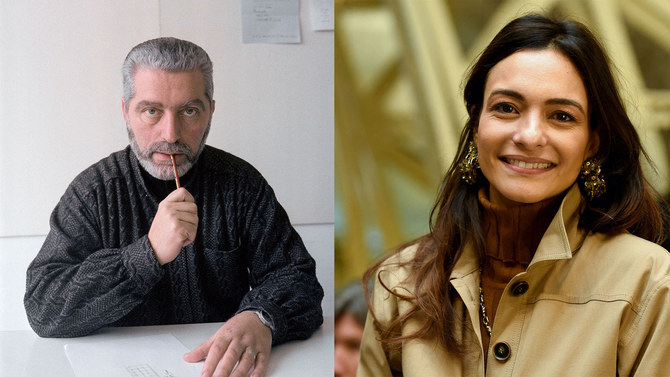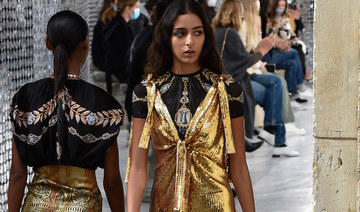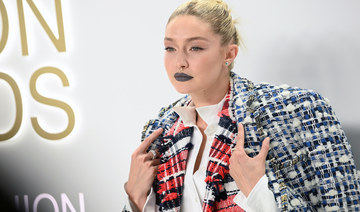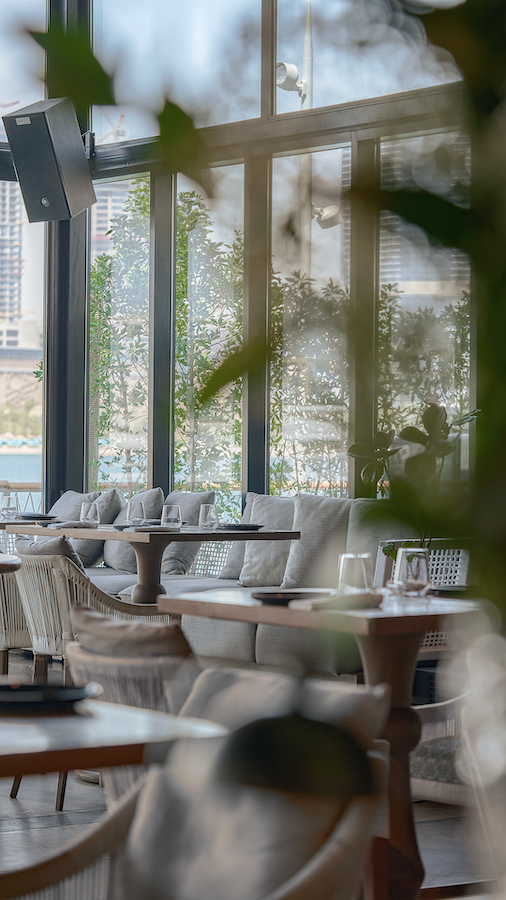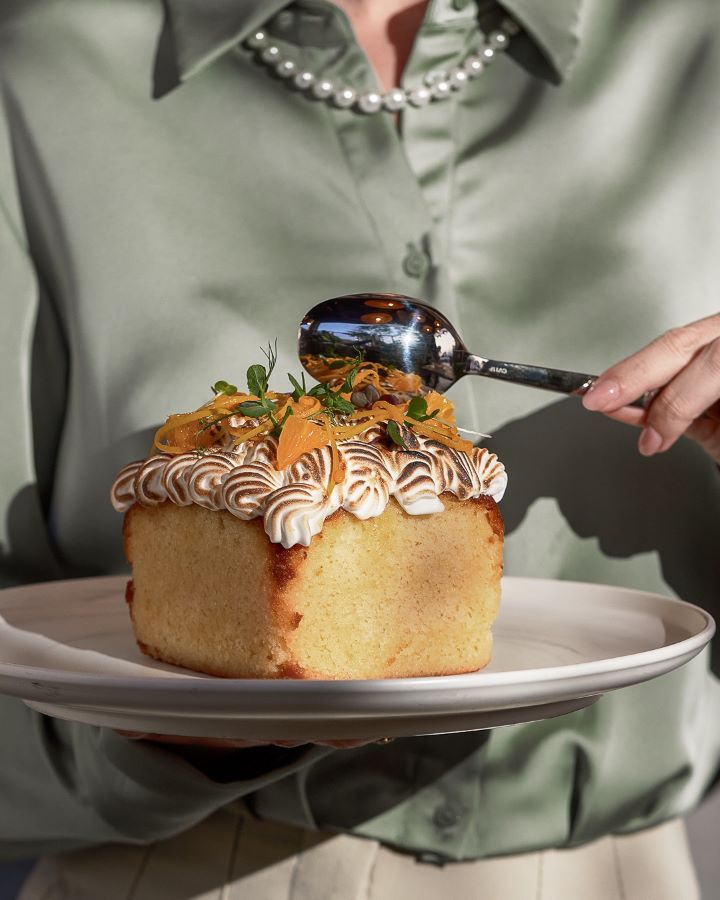PARIS: Tunisian managing director Nadia Dhouib this week paid tribute to the Spanish-born designer Paco Rabanne, who died at the age of 88 on Friday.
Dhouib, who was named managing director of Paco Rabanne in March last year, shared a black and white picture of the fashion designer, best known for his metallic ensembles and space-age designs of the 1960s, on her Instagram stories, and wrote: “Legend.”
The eponymous label he exited more than two decades ago hailed him as “among the most seminal fashion figures of the 20th century.”

Rabanne dressed some of the most prominent stars of the 1960s, including French singer Francoise Hardy, whose outfits from the designer included a minidress made from gold plates and a metal link jumpsuit, as well as Jane Birkin and Serge Gainsbourg, who were pictured in matching silver outfits.
Among his most famous looks were the fitted, skin-baring ensembles worn by Jane Fonda in Roger Vadim’s cult science fiction film “Barbarella.”
The death of Francisco Rabaneda y Cuervo, Paco Rabanne’s birth name, was confirmed by a spokesperson for Spanish group Puig, which now controls the fashion house.
“A major personality in fashion, his was a daring, revolutionary and provocative vision, conveyed through a unique aesthetic,” said Marc Puig, chairman and CEO of Puig.
“Paco Rabanne made transgression magnetic. Who else could induce fashionable Parisian women (to) clamor for dresses made of plastic and metal? Who but Paco Rabanne could imagine a fragrance called Calandre — the word means ‘automobile grill,’ you know — and turn it into an icon of modern femininity?" the group's statement said.
Born in a village in the Spanish Basque region in 1934, his mother was a head seamstress at Balenciaga. He died in Portsall in Brittany.
Rabanne grew up in France, where the family moved after Spanish troops shot dead his father, who had been a Republican commander during the civil war.
He studied architecture at the Ecole des Beaux Arts in Paris. He started his career sketching handbags for a supplier to prestigious fashion houses including Givenchy and Chanel, as well as shoes for Charles Jourdan.
He then branched into fashion, designing garments and jewelry with unconventional materials such as metal and plastic.
INTERNATIONAL EXPANSION
His first collection, which he described as “unwearable dresses made of contemporary materials” were pieces made of strips of plastic linked with metal rings, worn by barefoot models at a presentation at the upscale Paris hotel George V.
The Paris cabaret Crazy Horse Saloon was his next venue, where models paraded his skimpy dresses and bathing suits while wearing hardhats.
While his innovation and futuristic designs won plaudits, his fascination with the supernatural prompted public derision at times. He was known for recounting past reincarnations, and in 1999, he predicted the space station Mir would crash into France, coinciding with a solar eclipse.
Surrealist Salvador Dali famously approved of his compatriot, calling him “Spain’s second genius.”
The designer teamed up with Spain’s Puig family in the late 1960s, launching perfumes that served as a springboard for the company’s international expansion.
“Paco Rabanne made transgression magnetic. Who else could induce fashionable Parisian women (to) clamour for dresses made of plastic and metal,” said Jose Manuel Albesa, president of Puig’s beauty and fashion division.
The label has seen a resurgence in popularity in recent years, under the creative direction of Julien Dossena, who has updated the house’s signature chainmail designs.
“We are grateful to Monsieur Rabanne for establishing our avant-garde heritage and defining a future of limitless possibilities,” the fashion house said in a statement.
The designer’s work with metallic plastic gave a “sharp edge” to women’s clothes, an effect that was “so much more than a New Look,” fashion historian Suzy Menkes said on Instagram Friday.
“It was rather a revolutionary attitude for women who wanted both to protect and assert themselves.”
(With Reuters and AP)



